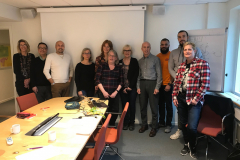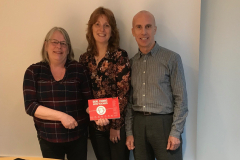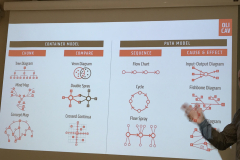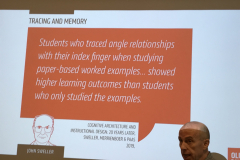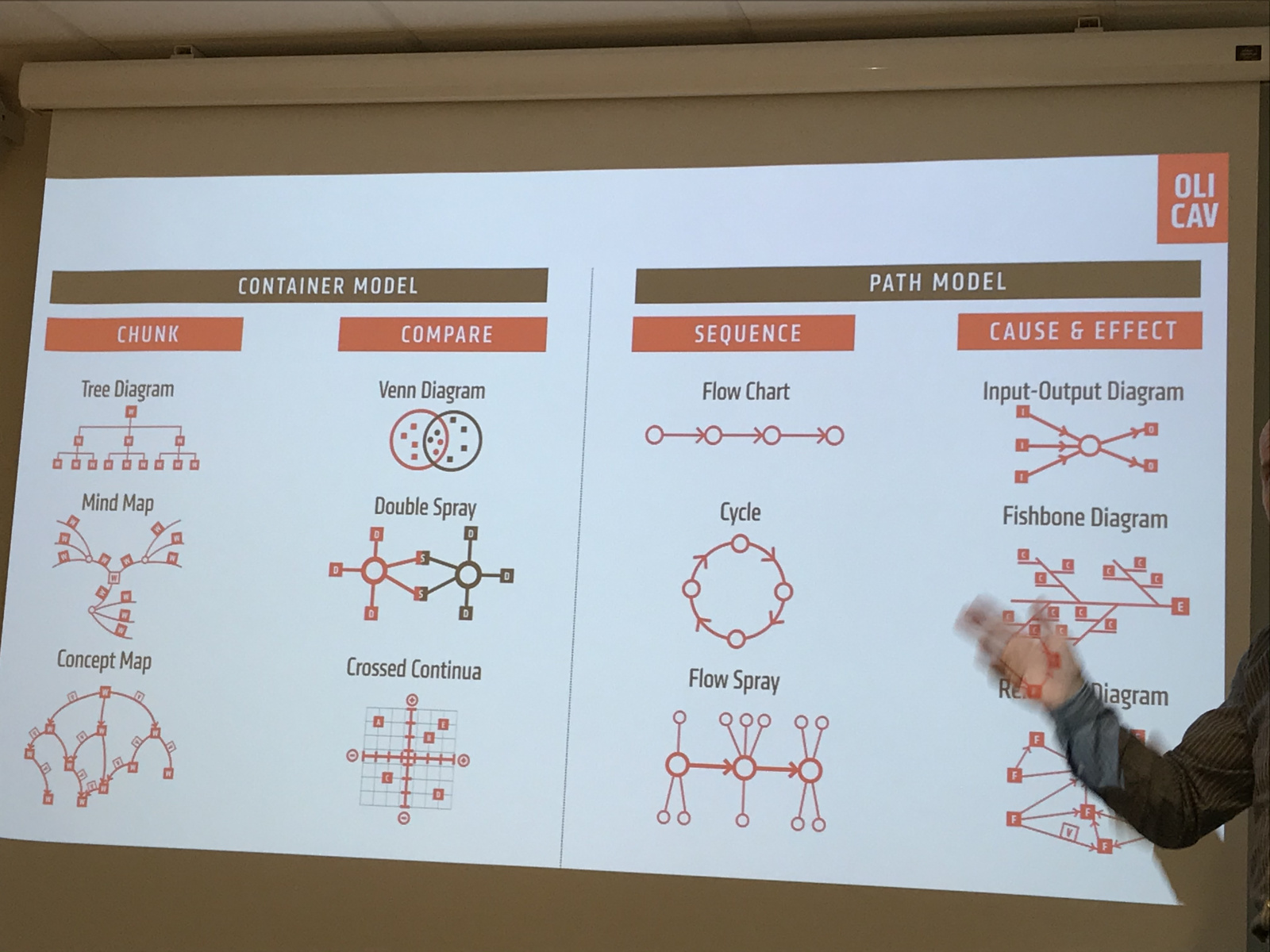
06 Jul Workshop on Dual coding [English]
Workshop on Dual coding- research and practice
Oliver Caviglioli is a former special school head teacher, turned information designer of educational ideas and processes and dual coding was a go-to first stop when teaching in special school, and soon led to find out the evidence to explain why it was so effective.
In March, Oliver Caviglioli visited Haninge to hold a workshop with the participants in the Erasmus+ project ATSSTEM. Two important topics covered were about research on learning and how research can benefit students.
-Oliver gave us some small simple tricks on how to enhance learning with simple illustrations. We got to try it ourselves. We already use illustrations and images in our teaching but here we got to learn even more, and we also found out that there was a lot of research behind it- research and practice. We learned a lot! Eva Ferntoft, teacher at Runstensskolan laughs, and Maria Pellebäck, central pre-school educator, agrees and adds that it is also useful for preschool and she hopes for more collaboration in the future.
The research that was central to the day is about Dual coding. In short dual coding supports combining and presenting verbal and visual information in an organised way to increase learning learning.
The participants performed various exercises during the workshop. One of the exercises was that half the group got to see Caviglioli’s presentation (visual and verbal) and the other half only got to listen to his story. Those who only got to listen to his presentation struggled more to recall the content compared to the others who also got to see the presentation with illustrations.
-There was a big difference in terms of recall, between us who got to see Oliver’s illustrations and listen compared to those who only got to listen to him. We were really surprised! Alaeddin and Wisam from the Brandbergsskolan in choir with Sirkka, special education teacher at Central education administration in Haninge.
Participants were also given the opportunity to try how combining verbal and visuals. One of the exercises was to draw their own pictures and how information can be organized and presented in different ways to facilitate learning, for example by telling about a historical event and at the same time drawing a timeline that the listener draws on the timeline. The listener then recounts the event using his own visual support.
-It wasn’t easy- quite the opposite actually, but it definitely increased the joyous atmosphere in the group when we saw each other’s illustration, Dikran laughs together with Hemin. They both saw many opportunities on how to directly apply today’s exercises in their teaching in science and technology at Haga-Lyckebyskolan’s high school.
Today’s experiences led to discussions on how teachers worked today and how they can refine their teaching to a greater extent by combining verbal and visuals and knowledge organisers with the help of dual coding.
-In the end of the day we were a bunch of super satisfied teachers. We all would like to try Dual Coding in our future teaching practices and in the ATSSTEM project, says Mia middle school teacher at Haga-Lyckeybyskolan.
Are you also curious about dual coding and Oliver’s work? Find out more here: https://www.olicav.com for more information and inspiration.
Facts:
The pilot schools in Haninge are Brandbergsskolan, Haga-Lyckeby skolan and Runstensskolan. They have worked with the project management during the last academic year [2019/2020] and will continue to do so during the project. The number of schools will be gradually increased. The Åbyskolan joins the project during autumn 2020.
Adam Boxer, science teacher from England presents on how he uses dual coding in science education: https://youtu.be/16SBht2iF_k from researchED Home 2020.
Teacher toolkit https://www.teachertoolkit.co.uk/2019/04/08/dual-coding/
Picture 1
Oliver Caviglioli and the participants from the ATSSTEM Haninge pilot schools Brandbergsskolan, Haga-Lyckeybyskolan and Runstensskolan, as well as the project group management at the Haninge Central Education Administration. From left: Maria, Hemin, Dikran, Mia, Eva H, Anna, Sirkka, Oliver, Wisam, Alaeddin and Eva F.
Picture 2
Oliver’s book Dual Coding for teachers, available in English. Eva Hartell, head of research at Haninge Central Education Administration has written a chapter where Anna Lindblom, teacher at Åbyskskolan also participates. Anna will join ATSSTEM pilot school starting fall 2020.
Picture 3
Example of knowledge organisers
Picture 4
Quote from Professor John Sweller..



